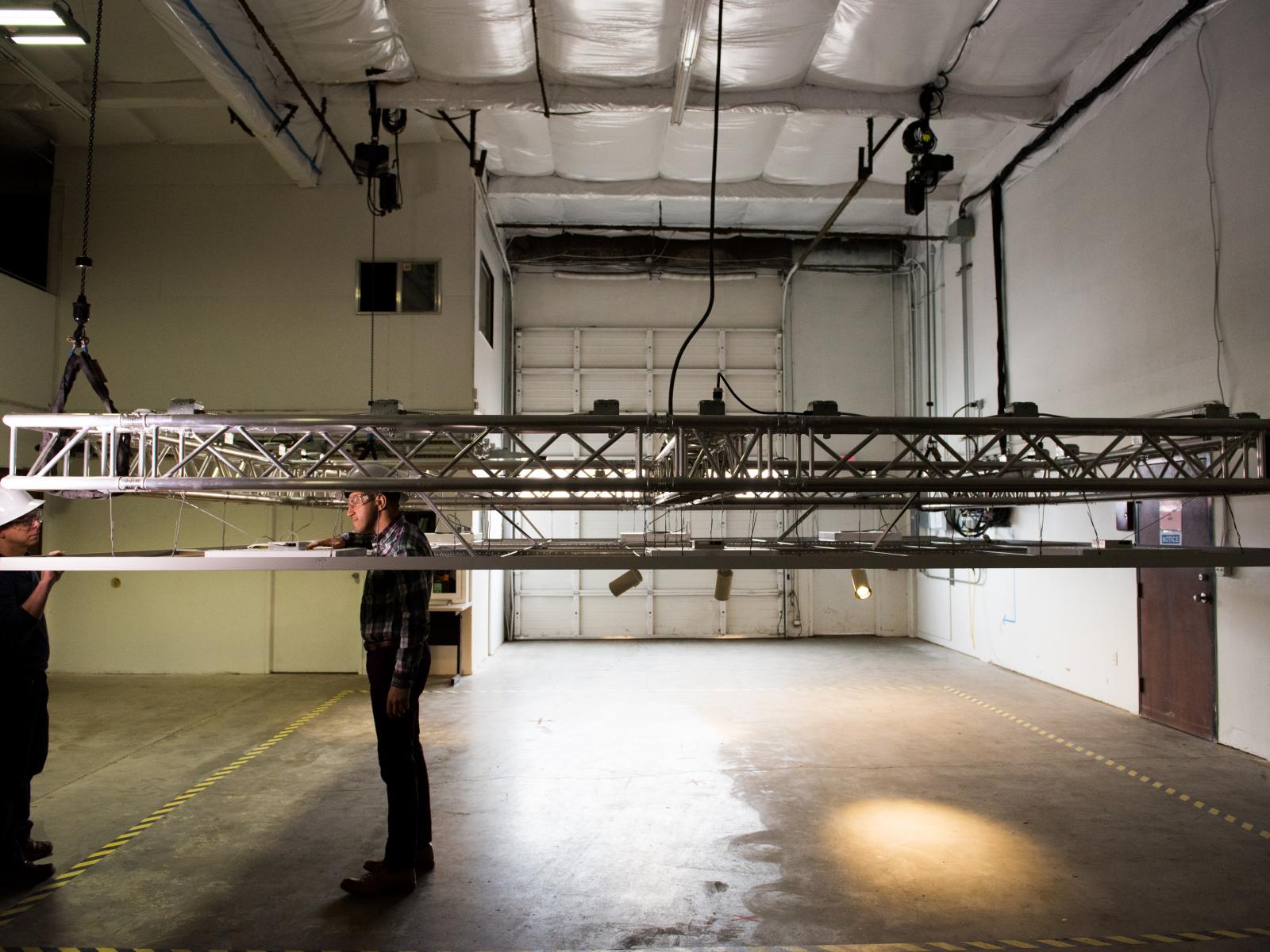Lighting Science and Technology Laboratory

Connected lighting has a huge potential to improve lighting quality, save energy, and provide new services. PNNL has established a Lighting Science and Technology Laboratory in Portland, Ore., to study and advance energy-efficient connected lighting systems. The results will increase visibility and transparency on key characteristics and new features, and inform technology developers of needed improvements.
The Lighting Science and Technology Laboratory is a large warehouse filled with lights, cables, controllers, and computers where researchers can study connected lighting. The laboratory infrastructure enables the efficient installation of indoor and outdoor lighting devices. Two ceiling grids are available for installing indoor lighting luminaires. The height of each is vertically adjustable, to enable easy installation and set varying luminaire heights. The grids have plug-and-socket interfaces to enable easy electrical connections, and circuit-level power and energy metering in the electrical panels that serve them. The laboratory also has dedicated infrastructure for street lighting luminaires; again, plug-and-socket interfaces enable easy electrical connections.
To enable the testing of multiple devices and systems, the Lighting Science and Technology Laboratory includes a software interoperability platform. The platform allows installed lighting devices and systems, which are not natively capable of exchanging data with each other, to communicate through a defined middleware interface. Multiple commercially available indoor and outdoor connected lighting systems have been installed in the laboratory, incorporated into the software interoperability platform, and made available for connected lighting systems and other studies.